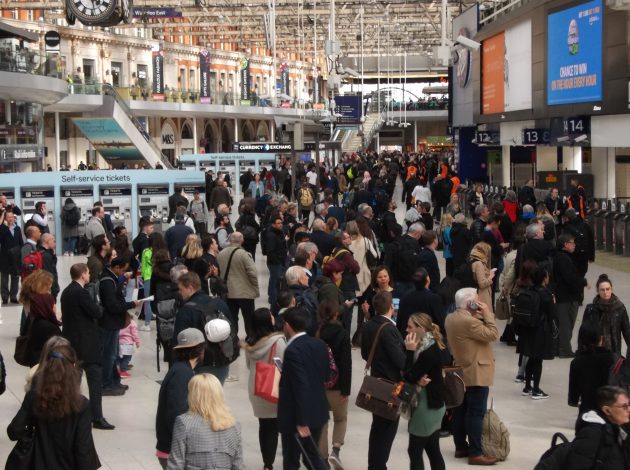Transforming population and migration statistics

ONS has begun an ambitious programme of work to transform population and migration statistics using new data- sharing powers approved by Parliament. Here Jay Lindop updates on progress so far and plans for the future.
Providing more detailed statistics and analysis on population and migration patterns is one of ONS’ highest priorities.
Today’s research report details how we are working in partnership across the Government Statistical Service (GSS) and the progress we are making on a programme of work to put administrative data at the core of our evidence on international migration (UK) and on population (England and Wales) by 2020. We’re asking users for their feedback to help us shape our ongoing work.
Estimating the size of the population and how it changes is important. We know that users – government policy makers, regional and local councils and the public – require a greater amount of detail about how different groups in the population impact on society and the economy. This includes the impact on our workforce, communities and public services such as the NHS and schools, to help people make decisions and plan accordingly, all for the public benefit.
International migration, or the numbers of people moving to and from the UK, is a key component of how our population changes over time. The International Passenger Survey will continue play an important role in our estimates. However, ONS has long acknowledged it has been stretched beyond its original purpose. Having a greater level of detail has become increasingly more important, to ensure decisions being made are based on the best set of information possible.
Today’s publication shows the progress made towards a new approach for producing statistics on the size of the population and how it changes over time, by bringing more sources together to fill gaps in coverage.
Our research has clearly demonstrated the benefits of combining multiple sources to provide new insights into population and migration, and one of the things it has highlighted is the complexity of travel patterns.
Circular migration
For years our statistics have been based on long-term migration, short-term migration and visitor numbers. But our research using new data sources shows that it is increasingly clear that migration travel patterns are much more complex than that.
For example, somebody comes to the UK from Poland. They are a seasonal worker on a farm in the summer, but then go off to work a ski season in France. They then go home to Poland, before returning to the UK for another season. That is circular migration in action.
Another example would be a British citizen who goes to work in the USA every month or so, travelling to and from both countries.
At the moment different data sources measure and classify migrants in different ways. Some will be classed as long-term migrants, some short term and some simply might not be included in these data sources at all.
However, by using Home Office Exit Checks data we have been able to look at individuals who arrived in the UK on a non-visit visa and their travel patterns for the following two-year period. We could then identify a range of circular journeys into and out of the country, categorise these into groups and look at their characteristics.
For example, those we defined as having a low or medium number of journeys tended to be here for around 2-5 months and travelled for the purposes of study or family. There is therefore potential to produce statistics on circular migration in future, so we will explore how we can do this based on feedback from our users about what aspects are most important to them.
We’re not interested in individual data, we’re only interested in aggregate data to inform local planning at a local level. We use data from surveys, the census and administrative sources for statistical and research purposes only. We ensure we use data for the public benefit, whilst keeping data protected and secure.
What else have we found?
We are still developing our future system and are in the process of acquiring the further administrative data sources needed to deliver this – for example, to address coverage gaps for EU migration.
However, our work, so far, has given us an improved understanding of what administrative data can tell us about migration from the EU, building on previous work which focused mainly on non-EU citizens.
For example, when we linked NHS Personal Demographic Service (PDS) data to the Migrant Worker Scan (MWS), we found median lags between arrival and NHS registration of 276 days for EU nationals and 60 days for non-EU nationals in our linked dataset. This indicates that those registering for a National Insurance number do not tend to access health services immediately, and that there are differences in the time it takes for EU and non-EU citizens to access these services. This suggests that we may want to use a wider range of data sources to identify when EU nationals have migrated into the UK, given the time lags in the health data.
We’ve also developed new insights into international student migration by linking HESA data with Home Office Exit Checks and HMRC PAYE data. There is also the potential for earnings data to be an important source for identifying and measuring migration patterns.
What next?
What our transformation work means for the look, feel and content of our regular releases is difficult to say at the moment. We want feedback from our users to help us shape our ongoing work to put administrative data at the core of our evidence.
We will continue to work closely across the GSS to develop our approach, and to address key evidence gaps identified by our users. This will build on the investment we have made in this area – launching the Centre for Demography and Ageing and the Centre for International Migration – bringing together a new team of experts to focus specifically on this work.
We intend to link across a fuller range of data sources available to ONS to continue to develop our data-driven rules and build an integrated system for measuring population and migration to improve our coverage. These data sources include further Home Office administrative data, PAYE Real Time Information (and Self-Assessment) and further healthcare data.
The next stage of our transformation work includes further research into understanding circular migration, and other patterns that might be useful to users of this data – for example, how the population changes during the daytime and how it impacts on different services .
It also involves developing a coherent understanding of what different data sources tell us and how they compare, including other administrative data and survey sources across government. We will publish an update on our work to compare what existing survey sources, including the International Passenger Survey (IPS), the Labour Force Survey (LFS) and Annual Population Survey (APS), tell us about population and migration alongside February’s Migration Statistics Quarterly Report, with conclusions following later this year.
We will also publish our next update on the overall transformation work in Spring 2019.

Jay Lindop is the Deputy Director of the Centre for International Migration